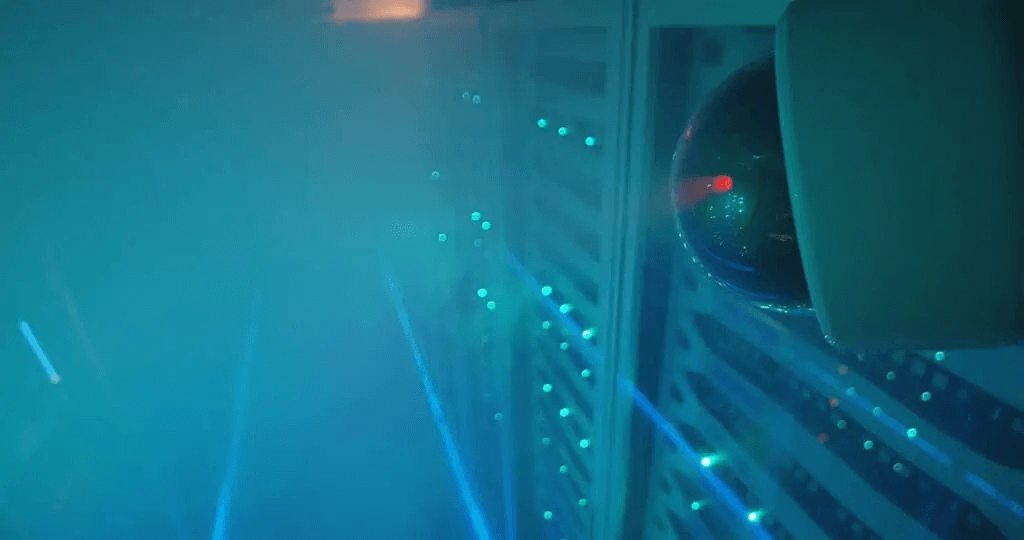LSZH (low-smoke zero-halogen) is optical cables’ most common flame-retardant material. According to NEC (National Electrical Code), the flame-retardant grades of optical fiber cables can be divided into OFNR and OFNP. In this article, Bonelinks will introduce what is OFNP OFNR and LSZH cables and how to choose them.
1. What is LSZH?
The outer jackets of the optical fiber cable have different material types. Each material has its characteristics (such as different fire performances) and its scenarios. Common outer jacket materials are divided into PVC, riser, Plenum, LSZH, etc. Therefore, LSZH is only a material property and does not involve flame retardant grades. But generally can meet IEC 60332, the level of OFN.
LSZH (Low Smoke Zero Halogen) has the characteristics of low smoke, low toxicity, low corrosion, and high flame retardancy. As a safe and environmentally friendly material, LSZH is an ideal choice for indoor/outdoor installation. However, fiber optic cables with LSZH materials are more expensive.
The following are the characteristics and applicable environments of other jacket materials.
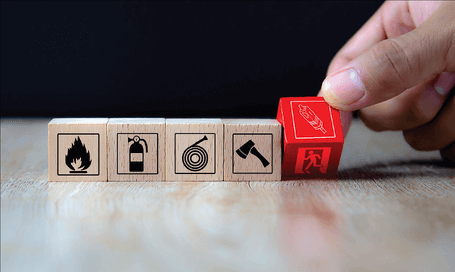
PVC (polyvinyl chloride): It has good mechanical characteristics, high electrical insulation, strong flexibility, sturdiness, and good flame retardancy, but poor stability to light and heat, so it is more suitable as a fiber optic cable for indoor use.
Riser is one of the main components to form OFNR-grade optical fiber cables. Its flame retardant performance is weaker than that of Plenum materials, and it is free of toxic and corrosive gases. Therefore, OFNR-grade optical fiber cables with riser materials are usually used in building trunk lines and horizontal cables.
Plenum is one of the main components that form the OFNP grade fiber optic cable, which is highly flame retardant and does not generate toxic or corrosive gases at extremely high temperatures. Fiber optic cables with Plenum material are the first choice for wiring in ventilation ducts or air return pressurization systems used in air handling equipment.
2. OFNP VS OFNR cable
OFNP and OFNR are all flame retardant grades and are not material properties.
The following is the list of cable jacket ratings:
OFNP (Optical Fiber Nonconductive Plenum)
OFNR (Optical Fiber Nonconductive Riser)
Cable in the US that installed in data center Plenum or Riser spaces must pass NFPA262 and UL1666 fire standard tests. According to the flame retardant grade, USA NEC (National Electrical Code) has developed the following standards.
- OFC cable is a conductive optical cable, that is, the structure of the cable contains metal (cannot be used in electronic connectors). The conductive cables contain non-current-carrying conductive members such as metal strength members and metallic vapor barriers. In contrast, OFN refers to non-conductive, fully insulated fiber optic cables.
- Riser optical cables, marked with the letter “R” (OFCR Optic Fiber Conductive Riser, OFNR Optical Fiber Nonconductive Riser), are the same as connecting buildings of different heights. They are optimized not to spread fire between other floors.
- Plenum cable, marked with the letter “P” (OFCP Optical Fiber Conductive Plenum, OFNP Optical Fiber Non-Conductivity Plenum), should be used in ventilated environments. They don’t produce a lot of smoke when exposed to fire and should generally have a smoke-blocking effect.
- Generally used optical cables are marked with “G”, such as OFCG Optical Fiber Conductive General-Purpose, and OFNG Optical Fiber Nonconductive General-Purpose.
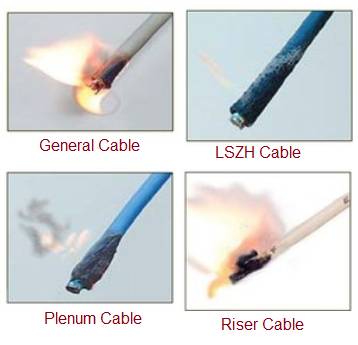
2.1 What is OFNP cable?
OFNP stands for Fiber Optic Non-Conductivity Plenum. The nonconductive element within OFNP means they contain no electrically conductive components. It conforms to NFPA-262 and UL-910 standards and is the highest flame-retardant grade.
When a fan is used on the optical cable to force it to blow the flame, the cable will extinguish itself within 5 meters of the flame spread. At the same time, the cable will not emit poisonous smoke or steam. It is usually installed in the ventilation duct in communication wiring applications or in the air return booster system used in air handling equipment.
2.2. What is OFNR cable?
OFNR stands for Optical Fiber Nonconductive Riser. It complies with the UL-1666 standard. OFNR is the second-ranked optical cable. Its fiber-resistance and low smoke are not good as OFNP. OFNR cables are engineered to prevent a fire from spreading from floor to floor within buildings. Under the condition of forced air blowing by the fan, the OFNR fiber must extinguish itself within 5 meters of the flame spread. OFNR cables are used for riser applications or spaces inside a building in pathways that pass between floors, such as a vertical zone or space.
3. How to choose fiber optic cables with different outer jacket materials?
In order to prevent and reduce the probability of fire in cabling scenarios such as data centers, you must know which class your data center belongs to, what it is used for, and what special requirements, so fiber optic cables with different outer jacket materials can be selected according to the standard.
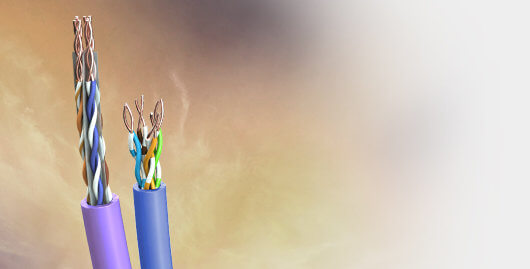
3.1 Choose fiber optic cables of different materials according to the layout area
LSZH cable: The most important feature is safety. LSZH cables are used in public places such as train and subway stations, airports, hospitals, ships and commercial buildings where toxic fumes are produced in the event of a fire. Similarly, the low smoke properties are very helpful. Many more people die from smoke inhalation in the event of a fire than from other causes. For personal safety, it is very important to use LSZH fiber optic cables that emit little smoke and zero halide materials in these locations.
Riser cable: A riser area refers to a vertical ventilation shaft/plan between two floors in a building, or some space between floors. These spaces allow for the vertical distribution of major utilities. A good example of a riser area is the elevator shafts and pipes from one floor to another. Riser fiber optic cables can be located at the backbone of a building and are used to transmit data, audio and video signals.
Riser cables are self-extinguishing to prevent flames from propagating up the cable and jumping between floors in the building. However, this type of cable is not as stringent as Plenum cables. Riser/PVC fiber optic cables are suitable for use in vertical trunk wiring areas to provide connections between entrance equipment or computer rooms and communication cabinets on different floors. The possibility of large-scale fire is small, and the flame retardant grade can reach OFNR.
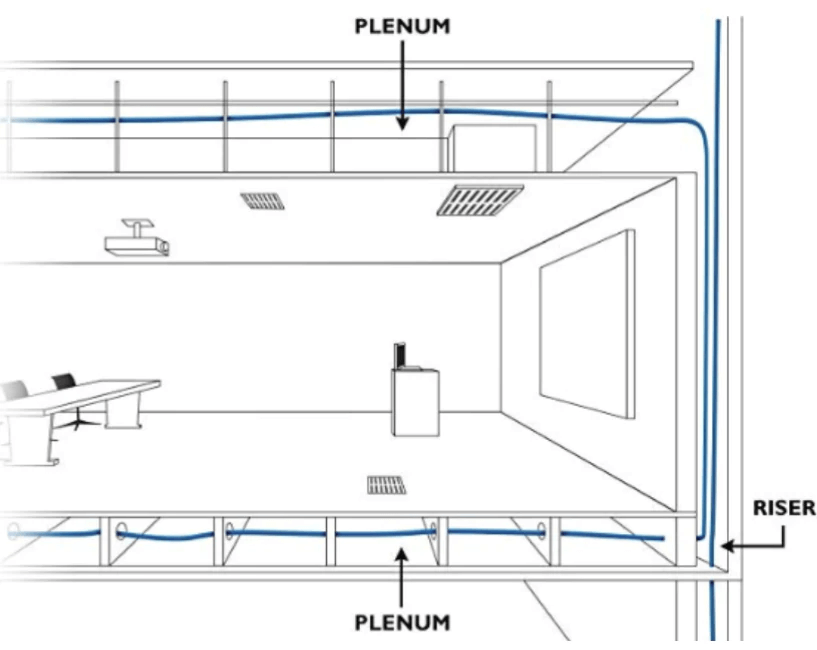
Plenum fiber optic cable: Plenum area refers to the passage or space used for circulating air in the HVAC (heating ventilation and air conditioning) system of a building. It is often located above the ceiling or below the floor and can serve as a receiving room, heating or cooling the air and then distributing it to the living area. Since the plenum space contains almost no fire barriers and forced air circulation, the fiber optic cables deployed here require higher fire resistance than those used in riser spaces.
Plenum-grade cables are sheathed in flame-retardant plastic such as PVC or FEP. Even with a fire, less toxic fumes are emitted when the shell melts. Plenum cable can be used in riser area, but riser cable cannot be used in the Plenum area.
Plenum fiber optic cables are suitable for use in areas where the air is circulated and fires are difficult to control, so OFNP flame-retardant fiber optic cables are the best choice. If you want to use OFNR cables in a building, the structure must have a confined ventilation system and fire exits.
Therefore, the optical cables used in buildings should pay attention to their flame retardant, toxic, and smoke characteristics when selecting them. Generally, the flame-retardant but smoke-free type (Plenum) or the flammable and non-toxic type (LSZH) can be used in the pipeline or forced ventilation, and the flame-retardant, non-toxic, and smoke-free type (Riser) should be used in the exposed environment. Both OFNP and OFNR can be used in general purpose areas.
3.2 Choose fiber optic cables of different materials according to the grade and size of the data center
Data center cables are intricate, converged, scattered, and extend to every part of the data center. Therefore, flame-retardant and fire-resistant communication cables are very important for data centers.

We can often see cables printed with FR/PVC and FR/LSOH. There are also cables printed with OFNR and OFNP. Generally, fiber optic cables made of Plenum are suitable for use in large/ultra-large data centers, fault-tolerant/parallel maintenance data centers; fiber optic cables made of riser/PVC are commonly used in medium-sized data centers, and redundant data centers; and optical fibers made of LSZH are often used in small data centers and general enterprise computer rooms. However, this is only a rough suggestion.
So how do we choose? Without a comprehensive understanding, the project may be exposed to dangerous fire hazards. When a fire occurs, the entire data center will burn due to the spread of the communication cable fire, resulting in irreparable huge losses.
Let’s look at the material composition and combustion characteristics of several cables first.
| Type | Fame retardancy | Smoke volume | Toxicity | Heat | Dripping |
| Flame retardant PVC | Low flame retardant | Burning produces a lot of smoke | Burning produces a lot of toxic gases | Burning produces heat | Burning with dripping |
| Flame retardant LSOH | Low flame retardant | Burning produces a small amount of smoke | Burning produces a small amount of toxic gas | Burning produces a lot of heat | Burning with dripping |
| OFNP | High flame retardant | Burning produces a small amount of smoke | Burning produces a small amount of toxic gas | Burning produces a small amount of heat | Burning without dripping |
PVC and LSZH cables not only have limited flame retardant properties but also generate a lot of heat and dripping when they are burned. Once such cables are used, they may become combustion accelerants in fires. In this way, we can understand why there are hidden dangers in the improper selection of cables.
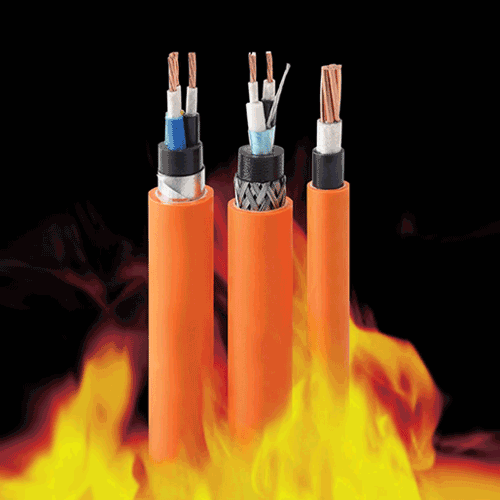
In addition, because there are few people in the data center, there are very strict requirements on the number and size of fire doors in the requirements of the computer room. It is very convenient for people to escape. In case of emergency, products that can provide higher fire resistance temperatures are required. Therefore, OFNR and OFNP cables are widely used in data center equipment rooms.
When we choose cables, we cannot simply distinguish the flame retardant properties of various cables from the material of the wires. Still, we should choose from the level of fire retardant and flame retardant. The flame-retardant PVC and flame-retardant LSOH used in the comparison in the above table are all selected from the material, while OFNP is selected from the flame-retardant grade. The reason for this comparison is that there are currently situations where materials are equated with flame retardant grades.
When selecting fire-retardant and flame-retardant cables, it should be distinguished according to the grade of fire-retardant and flame-retardant cables to a certain standard. For example, if you want to use LSZH cables, you should clearly choose whether to choose LSZH cables that meet IEC60332-1 or IEC60332-3C flame-retardant standards. Instead of just requiring flame retardant low smoke zero halogens, and no specific standard.
If you want to choose a cable with flame retardant PVC jacket, please indicate the standard of OFNP, OFNR, and OFN. Only in this way, you will know what level of flame retardant performance the cable you choose and what requirements it meets. After all, various flame retardant cables have different flame retardant properties and are far apart. Even some cables called flame retardant do not meet any level of flame retardant standards. Therefore, in such important places as data centers, it is necessary to clearly understand the flame retardant grades and characteristics of various flame retardant cables.

The new US version of the data center standard TIA942A has been approved. The standard was originally completed in October 2011, but it has been delayed due to disputes over the minimum requirements for fire-retardant cables in data centers. From here, we can also know that although the higher the grade of fire-retardant and flame-retardant cables, the better, many problems still restrict our use of high-grade flame-retardant cables.
Nevertheless, in the integrated wiring, especially in the integrated wiring of the data center, before using a certain type of communication cable, designers, construction parties and end users should not forget to figure out whether the fire and flame retardant properties of the cable itself are in line with the actual needs.
No matter what type of data center, no matter what type of fire retardant cable you tend to choose, the ultimate goal is the same, stop the spread of fire in a fire. As long as the fire does not spread and the fire does not expand, the smoke and toxicity can be avoided to the greatest extent.
4. Summary
Due to the different requirements of the fire rating, different cable types should be used on the floor according to the actual situation. In order to reduce the loss of equipment and facilities in the fire, the cable type must be carefully selected. Bonelinks is a supplier of OFNP, OFNR and LSZH cables supplier, providing a variety of fire and flame-retardant fiber cables to meet different application environments. If necessary, please contact us.

